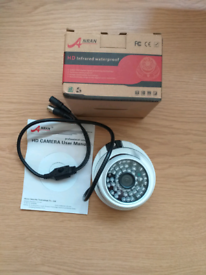A CCTV framework is not an actual boundary. It doesn’t restrict admittance to specific regions, make an object more diligently to take, or an individual harder to attack and loot. This doesn’t mean it’s anything but an illustration of situational wrongdoing avoidance. It is profoundly situational, and as will be shown, has some wrongdoing avoidance limits in the right circumstances. CCTV Installation Leicester aims only to reduce the crimes. Even though CCTV has many capacities, the essential precaution utility is to trigger a perceptual instrument in a likely guilty party. It tries to change wrongdoer discernment so the guilty party accepts on the off chance that he carries out wrongdoing, he will be gotten. At the end of the day, CCTV plans to build the apparent hazard of catch, a component which, accepting the wrongdoer is acting objectively, will de-propel the expected guilty party.

For this wrongdoing avoidance process to succeed, two components should exist:
- The wrongdoer should know about the cameras’ quality.
- The guilty party should accept the cameras present sufficient danger of catch to invalidate the awards of the expected wrongdoing.
Think about the primary component. On the off chance that, for instance, a CCTV framework is started to stem a seen expansion in jumble wrongdoing in a town place, the wrongdoing counteraction component necessitates that potential wrongdoers realize they are being watched. Proof proposes that even though implementers introduce a framework, have an exposure mission, and spot signage, there is no assurance the populace will know about the cameras. In Glasgow, Scotland, 15 months after 32 cameras were introduced in the downtown area, just 41% of those met knew about the cameras. These discoveries are like other examinations that observed only 33% of respondents knew they were inside the vision of a public street CCTV framework. Not exclusively are their restrictions with the public’s impression of the area of cameras, the second component (the presence of cameras influencing wrongdoers’ impression of hazard) isn’t ensured.
Uses of CCTV
In principle, CCTV ought to give the skilled guardianship important to forestall wrongdoing, yet this idea necessitates that guilty parties show discernment in their conduct. There is surely the idea, and some subjective proof, that expected guilty parties who are affected by liquor or medications may not mind or recollect that they may be under observation. This might be a variable in the explanation CCTV has all the earmarks of being more viable in fighting property-related misconduct than jumble and fierce offenses. There is a second instrument by which CCTV can lessen wrongdoing. The cameras might have the option to add the location and capture of guilty parties. This wrongdoing counteraction system necessitates that police can react sooner rather than later to any huge occurrences recognized by camera administrators, and that the nearby criminal equity framework can seek after the guilty parties’ conviction. This component will work whenever imprisoned wrongdoers are forestalled from carrying out additional violations inside the CCTV region (or other neighborhoods). Even though there might be some underlying wrongdoing decrease because of the establishment and exposure of another framework, wrongdoers may before long realize what kinds of episodes get a police reaction and the speed of that reaction. The accessibility of nearby assets is consequently a variable in the achievement of this instrument.







